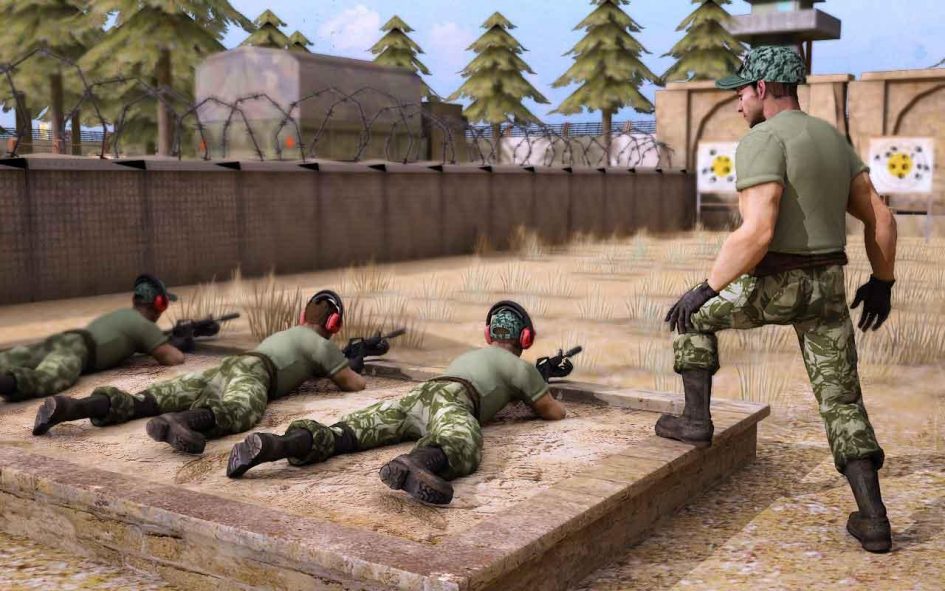Escape room… what is it?
It is a live‐action team-based game where players cooperatively discover clues, solve puzzles, and accomplish tasks in one or more rooms in order to progress and achieve a specific goal (usually including escaping the room) in a limited amount of time, all framed in a story and a theme.
Based on the experience in many escape rooms of true passionate for these games, here we offer you a complete guide with tips and strategies to increase your success and enjoyment. Let us stress the enjoyment part. We will insist more times through the guide, but don’t forget: an escape room is a game and your main goal is to enjoy and have fun with your team mates. Thus, in order to make a good use of it, take advantage of whatever you extract from this guide in that direction.
Part 1: GENERAL STRATEGIES
1. Think simple
Take into account that, on average, any person should be able to complete the game in time. Besides, you won’t need any previous advanced knowledge in specific areas (for example, if you find a sheet music, you will be able to get the clue from it without Conservatory or Music Studies). And in case you really need some advanced knowledge, the room will provide it (maybe not yet, so move on and come back to it later).
2. Search
Searching is the first thing you do when you enter a room. A deep searching takes only a little extra time than normal searching, and it can save you a lot of time in the long run. Not searching in depth is the most common mistake of experienced players.
– Search systematically and everywhere: look and touch inside the drawers, in the ceiling of boxes and wardrobes; check false bottoms, behind the doors, under the tables and chairs, carpets, cushions, mattresses, inside the books, in the holes of the wall, behind curtains and paintings; push (softly) the paintings if they are fixed, push or pull the bricks, the tiles on the floor or the baseboard if suspicious.
– Don’t use your eyes only, touch! Thus you will be able to reach camouflaged objects or blind points.
– Likewise, there will be immovable objects you won’t be able to touch or reach, so you must look carefully!
– Avoid searching twice. If you have already examined an area, it would be a waste of time if one of your team mates explores it again. Tell your friends what areas you already searched. Leave the drawers you already checked half-open, the books open or removed, the objects on the bookshelves lying, as well as for tables and chairs (watch out not to stumble). Obviously, if you are stuck and miss anything, you will need to perform a second search.
– Search inside the objects you find, especially if they are suspicious. If you have a battery you can’t use with anything, try to unscrew the top, it might be hiding something…
3. Be organized with the stuff
– Pile of unused stuff. As you search the room, put all the clues and items in one location. If you do this, the big picture begins to emerge and it would be easier to link objects or tell what you’re missing. Sometimes it is important where you get an item from, so remember it.
– Pile of used stuff. In most of the rooms the clues and items have only one use (otherwise the game master will tell you). That means one key opens one padlock only and nothing else, and a combination of digits opens a safe box and nothing else. So once you use an item or clue, discard it; you’ll avoid future confusions and time wasting. As for the keys, leave every key in its lock. Two exceptions: 1) if you find pen and paper carry them with you, they may be useful more times during the game; 2) if you find a flashlight carry it with you, it fits in your pocket and you never know when it can be useful.
4. Be organized in your head
Keep in mind what makes you stuck: a 4 digits combination padlock, a locked door, a directional padlock… Being aware of what the next step should be will help you to advance in the correct direction.
This is especially important when you’re lost. If you stay more than 3-5 minutes without moving forward, you all should have a meeting and revise what is yet to be open, what clues and items you still have to use and how you can solve the problem.
5. COMMUNICATION!!
This is what distinguishes a beginner from an expert team.
Poor communication is a fairly common reason why teams fail.
Communication is, by far, the MOST IMPORTANT thing in an escape room.
It is crucial that everyone in the team knows every clue and element yet to use in each moment and shares ideas about how to solve the puzzles. This enormously increases the chances of find the solution.
- When you are searching an area, call out those findings that are easy to share: “One 4 digits padlock!”, “A poster with colors that might tell us something!”, “One directional padlock!”, etc.
- Some elements you identify in your area will be immovable or hard to be explained with words. Lead your team mates to know them.
- Bring all clues and items to the pile of unused stuff so that your team mates can watch them. If an object is rare or unusual, encourage the others to hold it in their hands and observe it closely (this will make it easier to relate the clues in the future).
- Make sure all team members see, or at least know, the solution of every puzzle. Even if a puzzle has a trivial resolution or you solved it while your team mates were doing other tasks, the way it was solved might be important in the future or may give a hint for other puzzles. In addition, puzzles in a game are created by the same designer/s, therefore they are based on the same kind of logic. The more puzzle solutions you know the better idea of that logic you have, which can be useful for future riddles. Also, and not less important, don’t be selfish and share the solutions for the purpose of fun!
- If you’re stuck for more than 3-5 minutes, have a meeting and put everything in common.
Keeping a fluid communication is essential for the team to success, but also to enjoy. You go to an escape room to enjoy, and it is much more fun when you know about the whole game, the entire story, and you live the full experience. Be generous with your team mates.
Achieving a good communication is not easy, especially in numerous teams. It comes with experience and attitude. And attitude can enormously accelerate the process.
6. Teamwork
Often you will find several tasks that can be done at the same time. Once you all know what point of the game you are at and what is the next step, do not hesitate to split up to gain some time.
Celebrate your achievements. An escape room is a perfect example of teamwork and the positive effect of motivation in this field is well proved. Don’t be shy and express yourselves, a good teamwork deserves it!
Some teams play with roles. It is normal that every player finds out what he/she is best able to do and participates more in that kind of task: searching, puzzle solving, global vision, organizing… From our point of view, we encourage to develop everyone’s strongest skills, but we do not encourage to pigeonhole your team mates. On the one hand, this restricts the capacities of the pigeonholed member; on the other hand, it will lead him to not participating in the rest of the tasks, thus missing part of the experience.
We do highlight the importance of at least one member, especially for inexperienced teams, to take the “project manager” role. This is someone who doesn’t get deeply involved in the puzzles, instead secures the communication and good performance of the team:
- He/she knows the proper tasks to be done at each moment and communicate it to the others: “Come on team, we are looking for a 4 digits combination!”
- He/she knows who is working on what: “One of us just found a painting that might be a clue, everyone come and look at it; if you’re searching for something you might find it here!”
- He/she helps the game to flow, by avoiding any player to be obsessed by a puzzle losing the global scene.
- He/she can do all this without being bossy or stressing anyone. Even if we used exclamation marks above, there is no real need to shout. Also, he/she is not more important than any other team member.
7. Time
Be aware of the remaining time, but do not get desperate. It is very common among beginners getting nervous when the timer marks 10:00. Keep in mind that 6 minutes in a 60 minutes game correspond to 10% of the time! In only 3 minutes a lot of things can happen in an escape room, especially at the end, when you have a lot of open puzzles that you already worked on and solving the first one may lead you to solve the rest like in a chain reaction. So keep calm. Run from one spot to another, if necessary, to save few seconds, but keep calm. If you find yourself in a tight and frenetic epilogue and, being calm, you get to manage the power of the adrenalin, you will be surprised of your own capacities and experience one of the best sensations an escape room can provide.
Part 2: PUZZLE SOLVING STRATEGIES
1. General rules
– When you are opening a padlock, activating something, translating a text, etc., and after 2 or 3 attempts you don’t get it, let someone else try. Even to use exactly the same combination in the padlock. You will be surprised by how many times it works!
– In numeric padlocks, you can guess the last digit if you know the rest of the combination; you only have 10 choices. Be careful with this: we recommend an ethical use! Keep in mind that you play to enjoy. Hence, use this tip only if you already know how to obtain the last digit (for example, if the digit you miss is written on a little ball inside a drawer with hundreds of identical balls and finding it is just a matter of time), or if you are running out of time and want to reach the end of the game. Do not use it, for instance, when you have a padlock where every digit is the result of a different puzzle, or you will miss part of the game.
– When you enter a dark room, prioritize turning the light on. Do not waste your time with other puzzles, a common mistake especially when you have a flashlight. Just turn the light on so that all your team mates can start playing.
– If you find instructions, always read them carefully before doing anything else.
– The Game Master is your friend. Use his/her help if needed. At the end of the day, you play to have fun. Thus it’s better to be given a hint and feel the excitement of escaping the room than being stuck in a frustrating task for 20 minutes.
2. Padlocks, safe boxes and keypads
There are many types of padlocks and knowing them can help.

Key padlock

Numbers padlock
There is a mark or groove, on either the front or the side. You have to align the digits on it.
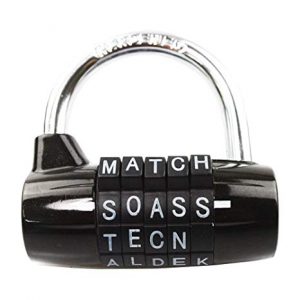
Letters padlock
Align the letters on the mark. Some padlocks combine letters and numbers.

Color numbers padlock
The order of the digits will be given by colors you’ll get from the clues.

Date padlock
Find a date in the room.
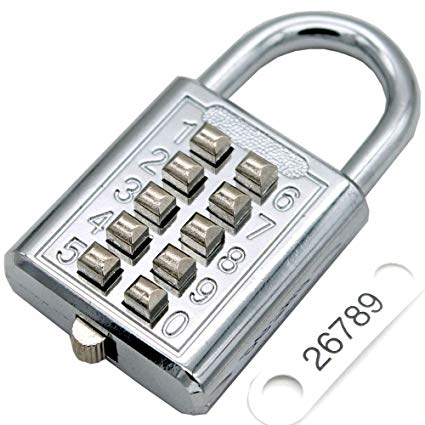
Numbers push-button padlock
Open it by pushing half of the buttons in any order. For instance, if it has 10 buttons, then it will open by pressing the correct 5 ones, no matter the order, and finally moving the small lever on the base sideways.
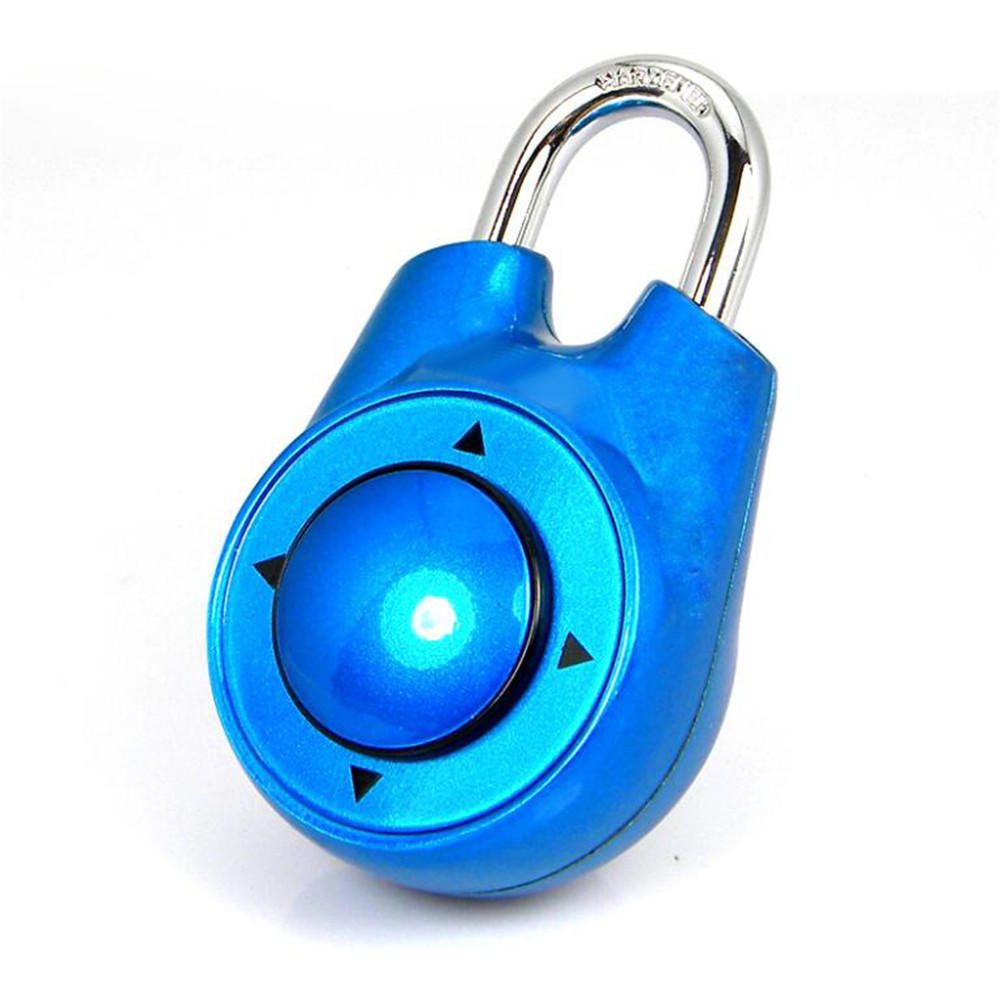
Directional padlock
It requires between 2 and 30 directions. In order to open it, firmly pull the arc after introducing the right combination. Push the arc twice to reset.

Arrows, letters and numbers padlock
The combination can be a sequence of directions, letters, numbers or a mix of them.
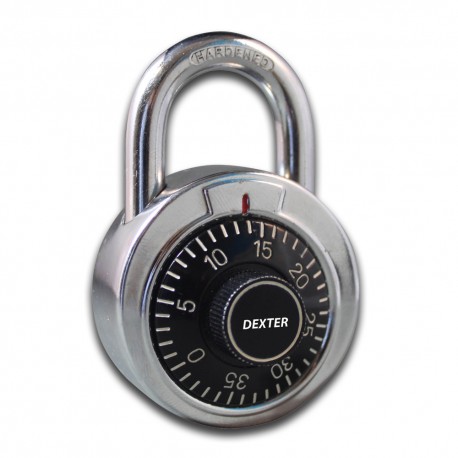
Wheel padlock
Like in safe boxes, there are 3 spinning discs to be aligned (by one number each) such that a groove will let a latch down. They are complicated to be opened and the room will give you precise instructions about it.
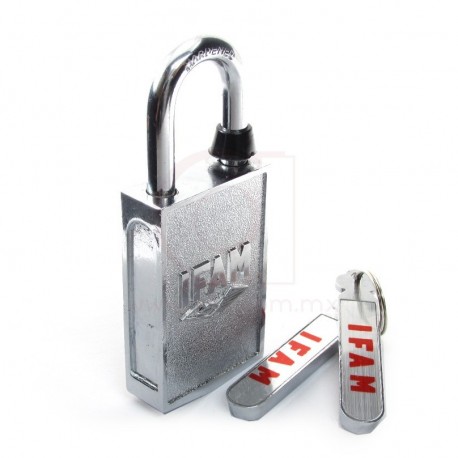
Magnetic padlock
It opens with a magnet like the one in the picture, so that’s what you have to look for.
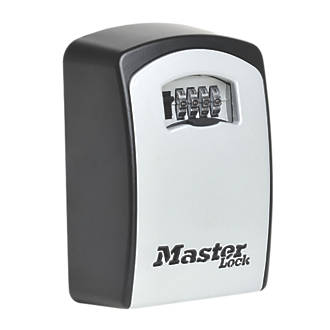
Wall safe box
After introducing the right combination, push the lever downwards to open it.

Wall push-button safe box
It requires between 2 and 10 digits, in any order. Push the lever downwards to open it.
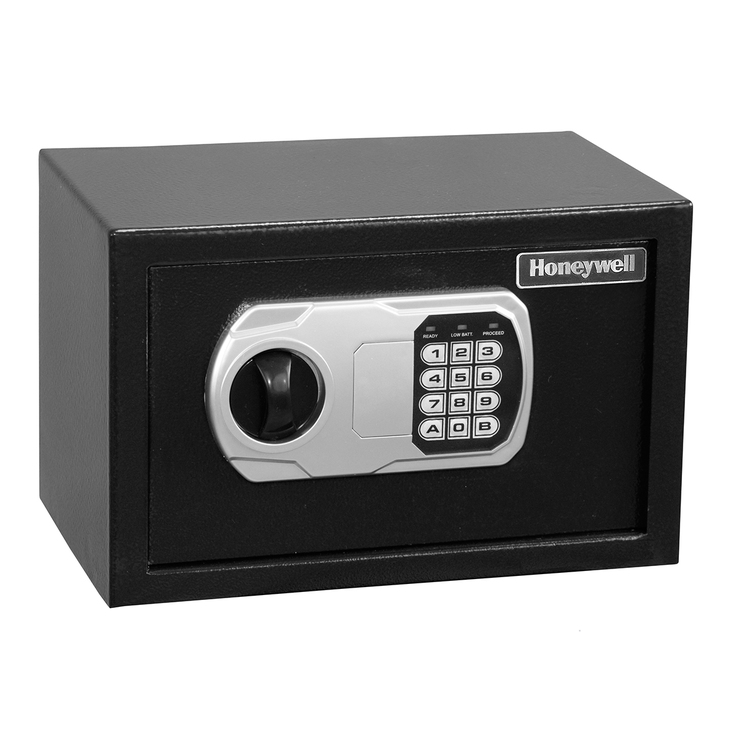
Keypad safe box
The combination is usually given by 6 digits plus a letter (A or B). So if you find a combination with the format “835621A”, you should try it here. After 3 attempts it blocks during 5 minutes, so do not try randomly!

Opening door keypad
It usually requires a combination of 4 digits followed by #. You might get the clue as “4632+#” or simply as “4632”. In the latter case, press “#” right after or the door won’t open.
3. Common codes and patterns
Here you have some of them. Our intention is helping you to have an idea of what you can find in a room, more than giving you solutions. But you’ll find actual examples in the following. Thus if you are one of those players with a low spoiler threshold and you like to discover everything by yourself, do not display the next content, just in case!
ExamplesAnytime you see dots and dashes like this
— — .-. … .
you should think about Morse code. The sequence is usually written somewhere, but it can also be given in terms of long and short flashing lights, or even long and short sounds. Don’t worry, you don’t need to memorize the code, the room will give you a hint.


If you see these “hieroglyphics”

you have a message written in Pigpen Cipher. Of course do not memorize it, the room will give you a hint.



If you see dots in a group of six like these

you’re looking at Braille code. Don’t memorize it, the room will give you the key.


Maze solutions, map routes and eyes/faces looking to the right/left/up/down usually indicate the combination for a directional padlock.
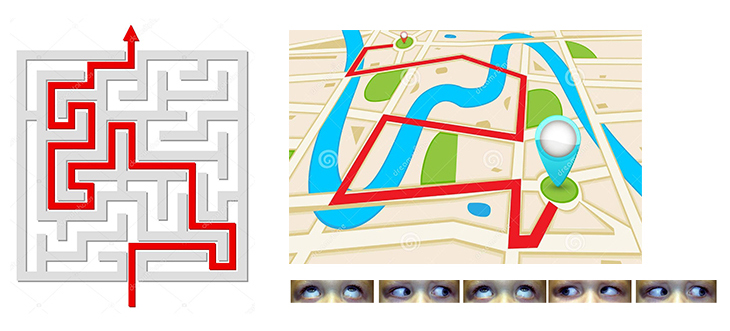

In some texts there may be isolated bold letters, capital letters or missing letters. Try to read those letters only. Example:
“It is crucial that every member in the team knows every clue and element yet to use at each moment. This enormously increases the chances of each player to solve a puzzle or, more often, helps to sum up the ideas of everyone until the correct solution is found.”
2905

Geometrical shapes may suggest a code; try to count their sides.

340

Remember:
- The difference between an expert and a beginner team does not stand in the ability of solving puzzles, but in the communication between players.
- An escape room is a team-based game, thus join your team mates both to complete the adventure and enjoy.
- The reason why you play an escape room is to have fun.
We hope this guide may be useful and, especially, help you to enjoy more the escape rooms you will play!
